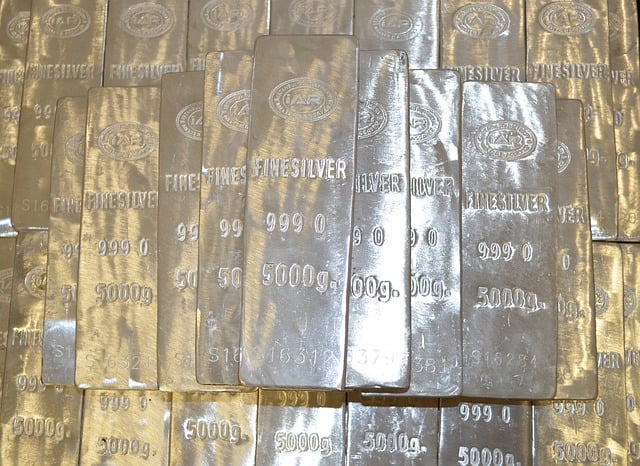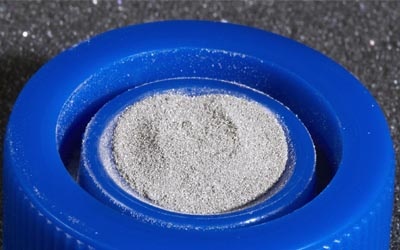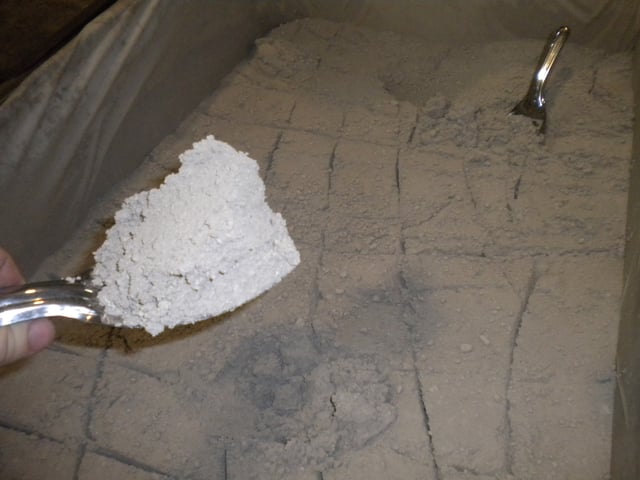How To Remove Silver From Solar Panels
Due to the increment in electrical and electronic equipment (EEEs), high-purity argent continues to be in high demand. For the past 4 years, silverish need has exceeded silver mining production, merely the global supply has near met the need each and every year – thanks to silver recovery and silver refining. Argent recycling will as well be critical to encounter future need, especially as we see the general need of metals increase across the globe, in relation technological growth. Loftier-purity silver tin can exist produced from silver refining and silver recycling by utilizing a serial methods and processes, such as silver electrowinning and electrorefining. I'd similar to delve into how these processes are carried out, and the outlook for silver production. Argent is a precious metal; currently (Dec 11, 2022) valued at $15.79 USD/ . Silver has a variety of uses, ranging from jewelry and silverware to electronics and renewable energy. Equally a catalyst, silvery is used in the production of two major industrial chemicals: ethylene oxide and formaldehyde, consuming 10M oz of silver per yr in the sometime. Silverish is besides a large component of photovoltaics, the solar panel industry consumed over 80M oz of silver in 2022. Because of its loftier conductivity, silver is widely employed in electrical and electronic equipment, which includes, simply is not limited to printed excursion boards (PCBs) in phones, computers, and TVs; in membrane switches used in buttons; and in devices like RFID tags. Although small amounts of silver are required in these devices, it still makes up a relatively big pct of the monetary value in relation to the actual corporeality used. Information technology's because of this that many of these devices are recycled and a lot of inquiry and effort goes into these processes. Silver ores usually contain a very depression content of silvery, which is why a lot of methods have been developed to recover argent from waste EEEs (WEEEs). In 2022, 886M oz of silver was mined, of the year'southward total supply of 1007M oz. The principal source of silver is from ores, with approximately 25% recovered from predominantly silvery ores, while the other 75% is recovered every bit a past-product of other metals such equally gilt, or base metals such as copper, lead, and zinc. Free Download - Silver Recovery Brochure To download fill the course beneath Copper Concentrates Copper sulfide concentrates are smelted, resulting in blister copper, which contains approximately 97-99% of the silver that was in the original concentrate. The blister copper is then electrolytically refined and 'slimes' accumulate on the anode or at the bottom of the refining tank. These slimes contain insoluble impurities, like silvery. The slimes are collected and smelted, oxidizing all the metals except for gold, platinum group metals (PGMs), and silver. The metallic that is recovered is called doré, which typically contains 0.5-5% aureate, 0.ane-i% PGMs; with the balance silvery. The doré metal is cast into anodes and electrolyzed in nitrate solution to obtain loftier-purity silver. Gold Concentrates Cyanide leaching is oftentimes used to recover gold from its ores. Fine gold particulates dissolve hands in cyanide, typically using NaCN concentrations of 0.02-0.05%; if the dissolved oxygen content of the solution is non high enough, aeration may exist required. iv Au + viii NaCN + O2 + 2 H2O → iv NaAu(CN)ii + 4 NaOH One time dissolved in the cyanide, the gold must be recovered from the pregnant cyanide solution. Frequently, the Merrill-Crowe zinc atmospheric precipitation process is used, or the adsorption of gold onto activated carbon. The steps in the Merrill-Crowe procedure are oxygen removal, mixing in of fine zinc powder, and gold precipitate recovery past filtration. The addition of zinc leads to the formation of a zinc cyanide complex and gold . 2 Au(CN) + Zn→ 2 Au + Zn(CN)4 2- Sulfuric acid is used to dissolve any zinc impurities that have precipitated with the gold. The final golden solids are smelted into gold doré bar. Argent is also easily leached using cyanide and tin can exist recovered using the aforementioned methods employed for gold recovery, as described higher up. However, electrowinning has proven to be an economical culling, even more so when utilizing technology. Electrowinning tin be used directly after the cyanide leach, resulting in fewer process steps, and therefore lower operating costs. Lead Concentrates Atomic number 82 sulfide concentrates are roasted and smelted to form atomic number 82 bullion. The diverse impurities including antimony, arsenic, silverish, and can are removed past various different processes; silverish is removed by the Parkes process. In this method of liquid-liquid extraction, zinc is added to a molten lead/silverish mixture and cooled slowly. Because of zinc'due south loftier melting point and lower specific gravity, it solidifies before the lead. The silverish in the mixture becomes full-bodied in the zinc crust since it is 3000 times more soluble in zinc than in lead. Gilded as well reacts with the added zinc, and this gold-silver-zinc alloy is easily off of the liquid lead. The remaining lead-gilded-silver residue is treated by cupellation, the process of heating to high temperatures (>800ºC) under strongly oxidizing conditions for impurity removal. the antimony, arsenic, and zinc are oxidized and removed, followed by atomic number 82, with bismuth, copper tellurium being the last to be oxidized and removed as a slag known equally "copper litharge". The remaining gold-silver alloy typically has a 99.9% purity. To separate the gilded from the refined silver, a process known equally 'departing' is used. The most usually employed method is digestion of the blend with nitric acid wherein the silvery is dissolved, the remaining gold is washed, and the silver precipitated from the washings every bit silver chloride, by salt addition. Zinc Concentrates Zinc sulfide concentrates are roasted and leached with sulfuric acid. The sulfuric acid leach dissolves majority of the zinc, leaving 5-10% in the residue, along with the impurities of gold, atomic number 82, and silver. This residue is melted to form a slag and powdered coal or coke is blown into the melt forth with air, a process known as slag fuming. Zinc is reduced and vaporized from the slag; the lead is converted to its metallic class and dissolves the silver and aureate. The metallic lead bullion is collected and refined, such that high-purity argent can be recovered using the Parkes process described above. Approximately 55% of silver used globally in 2022 was for industrial fabrication, this includes the photographic industry, too as EEEs. Just over 25% of silver was used in jewelry & silverware manufacturing. In the photographic manufacture, silver tin exist recycled from spent photographic processing solutions via electrolytic methods. In the jewelry industry, loftier-grade jewelry flake can be re-alloyed and the silver recycled on site. The process includes collecting the fine dust that is generated when precious metals are polished and ground, known as the 'jewelry sweeps'. The grit is smelted and to obtain pure silver. Oftentimes, low-grade silver chip has very low value and is returned to a smelter to be processed. Methods that are applied to gold recycling, such as cyanidation, are non usually economical for silvery scrap. Silver can be refined through electrolysis, using anodes made up of crude silver and gold: approximately lx% argent, 30% gold, and the remaining 10% equally base metals. The anodes are fabricated by charging silver and gold bullion into a furnace, the same furnace that is used for melting fine silver and gold to be cast into bars. The cathodes used in silver electrolysis are thin sheets of 1000 fine silver, crystallized silver powder collects on the cathodes and removed past knocking or sweeping the cathodes. The silvery powder is done in a centrifuge to complimentary the metal from the soluble impurities and acrid. This powder is so melted down into bars. The electrolyte in this process is fabricated upward of 3% silver, in the form of silver nitrate, 1.5-two% costless nitric acrid, and a little liquid gum, with the purpose of toughening the silver deposit on the cathode. If the electrolyte has greater than 8% copper it will also eolith onto the cathode, which is why the silver concentration must be monitored in the electrolyte. To prevent the silver from sticking to the cathodes, the cathode sheets are treated with a "dope" which consists of silvery nitrate, copper nitrate, and hydrochloric acid. The anodes are removed when the silvery has been depleted to ~ten% of the anode, which is now rough or "black" gold, containing approximately 1% base metals. The anodes are melted down and ready for gold electrolysis. Electrowinning of argent is another effective method for silver purification and silvery recovery, particularly directly from solutions containing silver. Examples of this include solutions from the photographic manufacture, or in the recycling of photovoltaics. Every bit described in the section on gold concentrates, gold and silver are precipitated from solution using zinc, in the Merrill-Crowe process, based on their nobility. Beingness , they accept a preference to remain in their metallic states. Ag(I) has a reduction potential of 0.8V; Au(I) of 1.7V. Based on the same principle of reduction potential, gilded and silver tin can also be hands electrowon from solution into high-purity products. Electrowinning with technology, argent can exist recovered to a purity of up to 99.999%, even in the presence of base metals. Impurities such as cadmium, copper, atomic number 82 others are easily rejected. With polishing cells, the electrolyte can be depleted to <10 ppm. Advantages of engineering include the ability to recover loftier-purity silver from many different solutions: A large precious metals refinery in India produces over i tonne per twenty-four hour period of high purity silver using technology. With high surface surface area cathode, they also deplete silvery in the electrolyte to less than 5ppm and eliminate argent chloride precipitation on the bleed to effluent treatment. Directly electrowinning tin can be used on a wide range of electrolytes containing silver. With technology, 99.99% silvery can be produced from an electrolyte with as depression equally 10 g/Fifty silver, giving a singled-out and obvious reward over conventional silver refining. Table 1 below outlines the principal differences between electrorefining and electrowinning of silver. Tabular array i: Conventional Electrorefining vs. emewPowder Applied science for Argent Recovery Conventional Electrorefining emewPowder Technology Solution Concentration Required for 99.99% Ag >l thou/L Ag >10 g/L Ag Production Rate Decreases with decreasing anode weight Consistent production rate Anode casting and treatment Yes No Recycle Load Spent anode recycling, re-melting No recycle load, no spent anodes to re-melt Working Capital High inventory (three times production rate) Low inventory (third of conventional ER) Gold Release 24-72 hours 6-8 hours Bleed Solution AgCl atmospheric precipitation Silver recovered directly from bleed and recycled dorsum into the procedure Silver Pulverisation Recovery Silver powder stripping is manual PLC controlled, fully automated functioning Theft/Pilferage High potential Fully enclosed, locked, low potential Recovery of argent and silver recycling is accomplished using various methods, including the Parkes process, cupellation, parting, slag fuming, and electrolysis (electrorefining and electrowinning). Silver is virtually often recovered from low-course mineral ores, with less than 2% silver content. The techniques mentioned above, while employed for silver recovery from ores, can also exist utilized for silvery recovery from EEEs, including solar panels and excursion boards. Recycling of argent from these EEEs will exist a very of import surface area for the future, every bit metal demands increment with new technological advancements. In the U.S. it was quoted by Lazard that new solar ability plants are now cheaper than new coal, natural gas, or nuclear power plants; and the price continues to drop. In Commonwealth of australia, China, Republic of india, Kingdom of saudi arabia, and the UAE, costs are dropping fifty-fifty faster. With so much growth in the industry, it means that at that place will be a need for more solar panel recycling in the coming years. Upward to 95% of silver and copper has been recovered from electrolysis of spent solar cells in research studies, and a standard silicon solar cell module of 60 cells contains approximately 6 1000 of silver. At a 95% recovery, 5.7 thousand (0.183 ) of silver at $fifteen.79 USD/ equates to $two.89 USD/module. The global market size for solar console recycling was valued at 63.8M USD in 2022, with a projected compound annual growth rate (CAGR) of 22.1%, forecast to 2025. With an expected lifespan of xx-30 years, information technology is no surprise that the recycling market will be very prosperous in the new future. The US Geological Survey reported that the known silver reserves globally full 530 000 tonnes, and in 2022, 885.8M oz was mined. At this rate, the global stores volition be depleted in 20 years. Harnessing the power of engineering science for silver recovery from a variety of silver containing ores and WEEEs will assist supply high-grade argent to encounter the demand in the years to come up. Following cyanide leaching, or other ore concentrate leaching processes, bleed solutions can be run through an arrangement to recover silverish from a broad range of silver concentrations. For more information on the power of for silverish recovery and various case studies, please visit the Downloads section on our website. FREE Download - emew Benefits for Silverish Production To download make full the course below Sources: Adams, Mike D. (2005). Advances in Gold Ore Processing. Elsevier. pp. XXXVII–XLII. Industrial Process Profiles for Environmental Use, Volume 168. (1980). Cincinnati: Industrial Environmental Research Laboratory, Role of Research and Development, U.S. Environmental Protection Agency. Lazard's Leong, W.West. Percy, J. (1870). The metallurgy of lead. London: J. Murray. pp. 148 U.Southward. Geological, Survey Mineral, Commodity Summaries, 2022. Wiebe, J. (2017). Silver Survey Update 2022. [ebook] Thomson Reuters. Bachelor at: https://world wide web.silverinstitute.org/wp-content/uploads/2017/11/SilverMarke-2017_Interim.pdf [Accessed 8 Dec. 2022]. World Argent Survey, 2022. The Value of Silver

Production of High-Purity Silver
Silver Refining and Silver Recovery

Silver Recycling

Silver Electrorefining and Argent Purification

Argent Electrowinning
Future Outlook on Silver Recovery
Topics: metal recycling, electrowinning, emew, Refining, metal powders
Source: https://blog.emew.com/silver-recovery-from-scrap-and-low-grade-residue

0 Response to "How To Remove Silver From Solar Panels"
Post a Comment